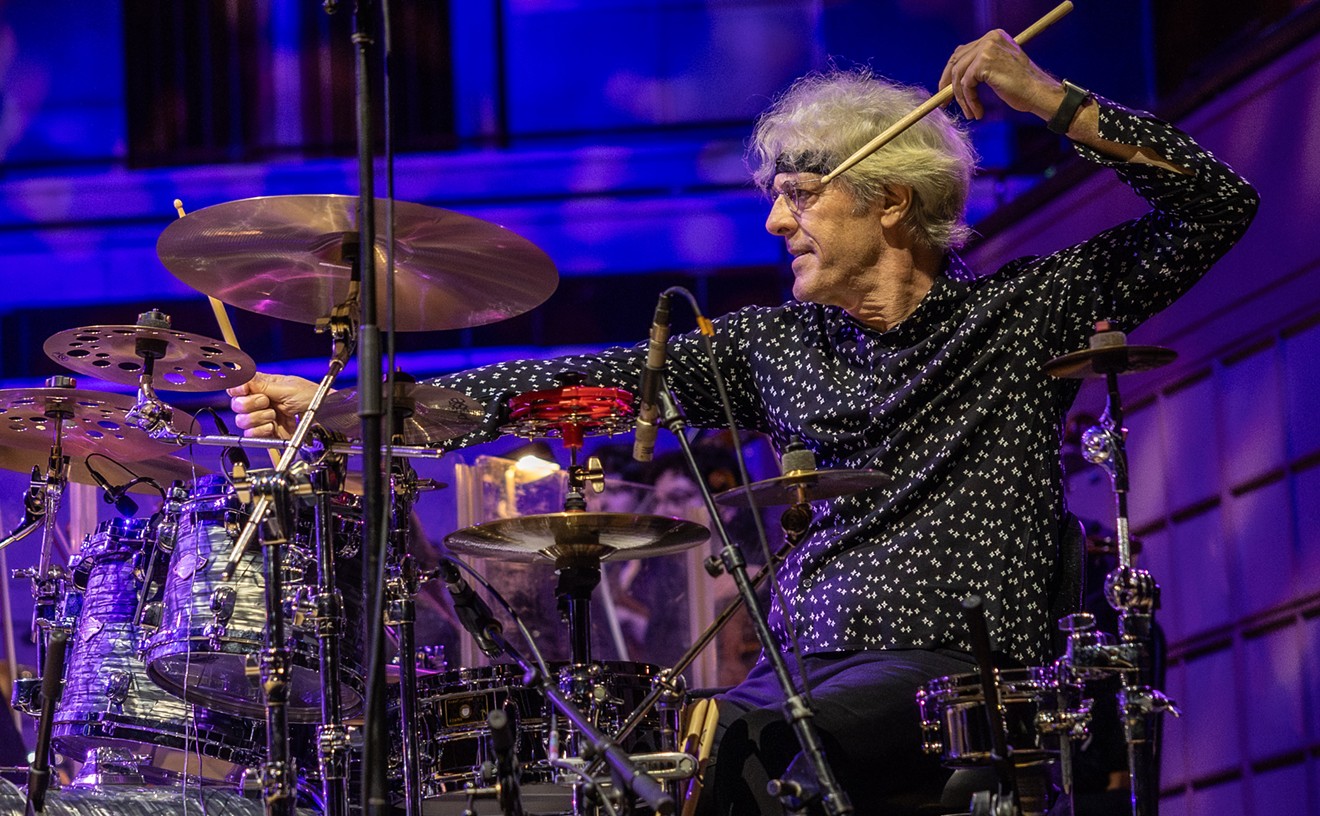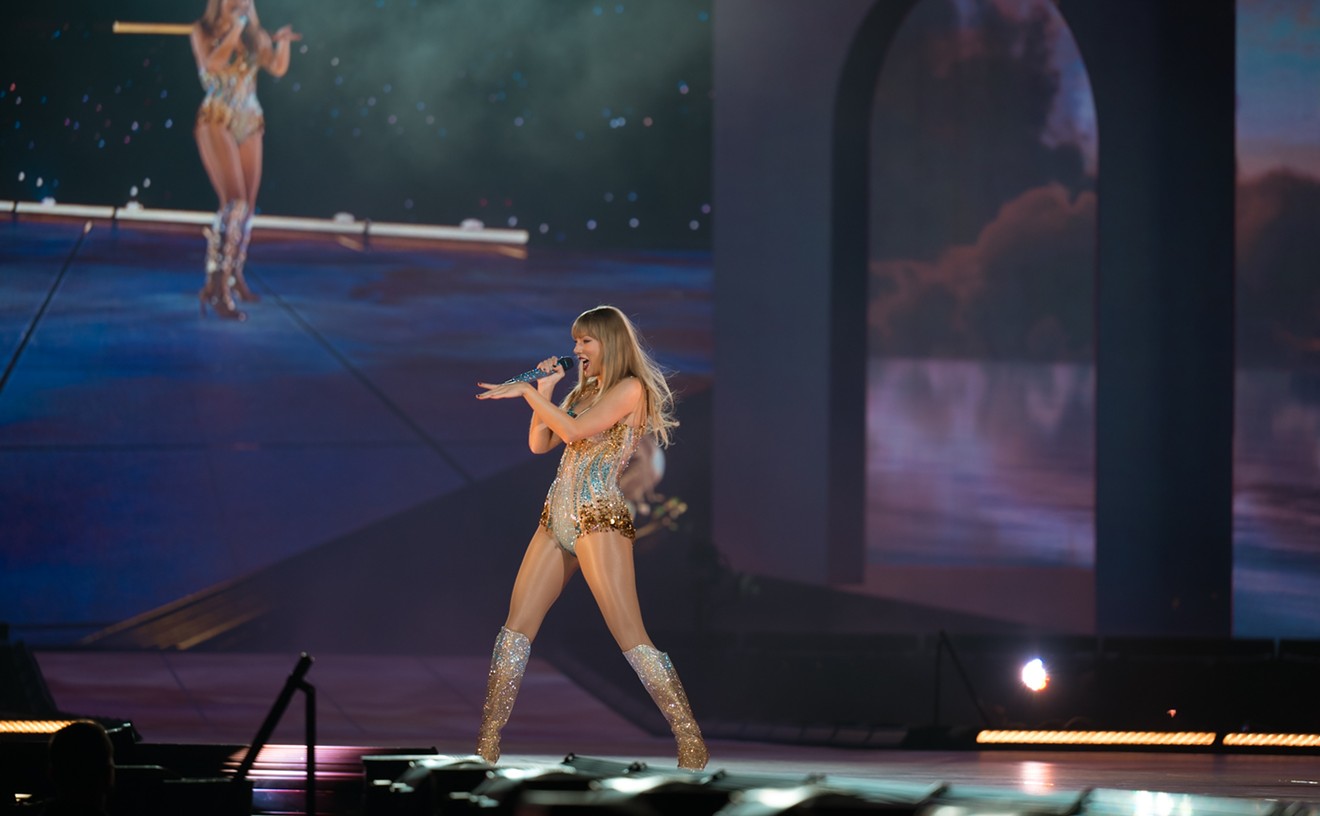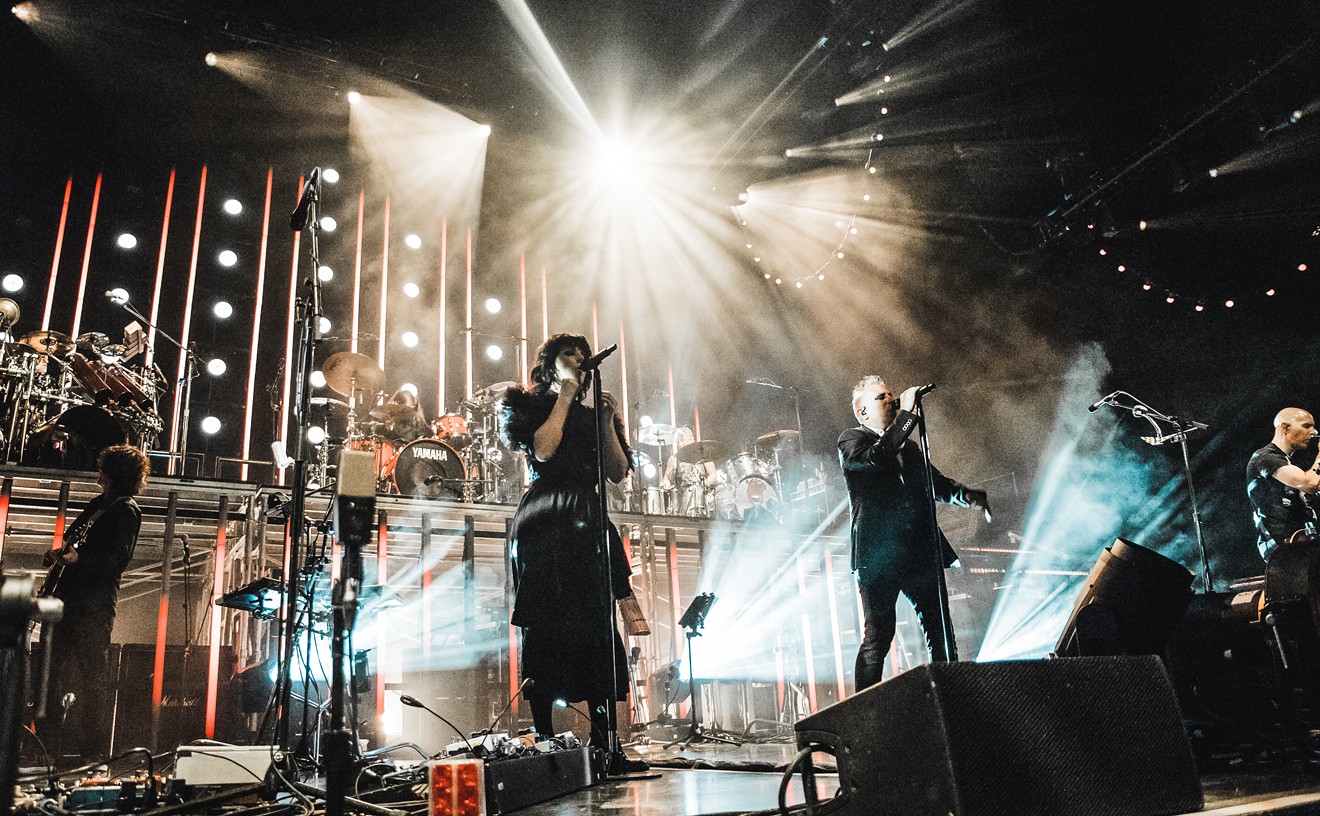The Chieftains are one folk group who truly get the point. Their musical weapons are indeed old school -- fiddles, harp, flute, pipes, and Irish bodhran drum -- yet they can boast of winning gold records and Grammys and Oscars. Among the many guest stars who have appeared on their albums is bound to be somebody whom just about anybody would find cool. Take your pick: The Rolling Stones, Tom Jones, Van Morrison, Joni Mitchell, Chet Atkins, Elvis Costello, James Galway, Sarah McLachlan, Willie Nelson, even Burgess Meredith, to name but a few. They've recorded with Sinead O'Connor and shared a stage with the Pope, were the first musical group to perform in concert at the United States Capitol and on the Great Wall of China, and recorded what Time magazine called 1996's album of the year (The Long Black Veil). When The Chieftains make music for the people, they are anything but exclusionary about it.
So how did six musicians who started out playing for the sheer enjoyment of it end up as Ireland's official musical ambassadors to the world? Sure, in part, it's their amazing individual musical abilities, and the considerable charm of Irish music. But The Chieftains have become undoubtedly the most successful traditional music group in the world mainly thanks to the leprechaun-like fellow who plays Uilleann pipes and tin whistle in the band, Paddy Maloney.
"That's just down to Paddy's vision," says Chieftains singer and drummer Kevin Conneff when asked to explain how the group has achieved such popularity and pulled off numerous conceptual and artistic triumphs. "He has amazing vision. He's a great bandleader, and he has these ideas about how to bring the music to a wider and wider audience, and I think he's achieved that very well. Some of these experiments, when they were first mooted, didn't appeal to us all very much, but when they were done, we realized how effective they were."
Thanks to albums such as The Long Black Veil (with Sting, Marianne Faithfull, Ry Cooder, and Mark Knopfler, in addition to a number of the superstars mentioned above), Tears of Stone (with female singers such as Bonnie Raitt, Mary Chapin-Carpenter, Diana Krall, Joan Osborne, and others), Another Country (a Nashville outing with Nelson, Atkins, Ricky Skaggs, and Emmylou Harris), and their Irish Heartbeat collaboration with Van Morrison, The Chieftains have reached countless people who have no idea that the drum Conneff plays is called a bodhran (pronounced boe-ron).
"I know for a fact that a lot of people came to us via The Long Black Veil album and had never been to a concert of Irish music," Conneff says. "When we toured when The Long Black Veil was at its peak, there were people coming because they had heard it. And of course, our concert didn't have Sting or anybody else on it; it was just ourselves, for the most part. Suffice to say they didn't leave at the interim, and they were still there at the end giving us a good ovation."
But in a way, the entire career of The Chieftains has been imbued with that element of surprise. A collective of some of the best Irish traditional musicians of their day who joined together in 1962, the group spent their first decade or so playing folk gatherings as a strictly amateur affair. They had little idea that they would find an audience beyond the Irish-music devotees in their homeland. Then, in the early 1970s, a folk-music promoter invited the group to play a concert in London. "He put The Chieftains on at the Royal Albert Hall, and they thought he was mad -- the Albert Hall? Do you know the capacity of that?" says Conneff, who had yet to join the group. Nonetheless, the show filled the venerable concert hall. "I think they were all nearly in tears, because they just played what they played, and the whole Albert Hall went apeshit."
That show launched a professional career that has taken Irish folk music around the world, and brought countless other performers and fans into the group's rather broad fold. Similarly, Conneff was also seduced by his native country's traditional music into becoming an acolyte, if not a proselytizer. As a youngster, he recalls, "I was interested in Elvis Presley and Little Richard and so on. And when I was a teenager, some of my workmates -- I started work when I was 15 -- had an interest in Irish music. So I went along with them for fun one weekend to a music festival, and I came face-to-face with Ireland's own music, and it just absolutely knocked me out, just had an immediate effect on me. So I just started following it and learning some of the old ballads."
Conneff later started a Dublin folk club called The Tradition, where Chieftains Sean Keane and Paddy Maloney would play solo shows. Then, in 1976, "I was working at my nine-to-five job, which was design for printing and lithographic plates. I was working in the darkroom, and the phone rang, and it was Paddy Maloney, wanting to know if I'd go and record with them in London on one or two tracks of an album they were doing.
"So I squared it with my boss to take my spring week's holiday and go over, and Paddy used me on pretty much all of the album. And then, towards the end of the week, on adjoining bar stools in a pub on Portobello Road in London, he asked me if I'd consider making it permanent, because he'd like me to join. So I gave it some thought, and here I am. I thought I'd do this for couple of years and go back to a real job."
Even now, almost a quarter century later, Conneff himself has those moments when he has to pinch himself to see whether all that The Chieftains have achieved is true. "It still happens," he says with a chuckle. "Obviously, when you are standing on the stage of Carnegie Hall or Symphony Hall in Boston, and you realize who has stood on these boards, from Caruso to you name it...If you think about it too much, of course, if I do, my knees start trembling. So it's not too good to dwell on it for too long, because I feel then like, what am I doing here?"
After all, the music The Chieftains play was indeed an indigenous style, enjoyed by regular folks in their far-flung small villages, performed in the pubs and at parties and family gatherings. Like other traditional sounds, it began to be revived during the folk-music boom of the 1950s and '60s. These days, one can walk into pubs all over Ireland and come across impressively talented musicians, just playing for the fun of it.
"There's a very high standard," notes Conneff. "Paddy will admit to being frightened when he hears some of the pipers, and I could say the same about bodhran players and singers too."
"There's an incredible swing of interest towards Irish music, which wasn't really there in the '60s. It was people like The Chieftains long before I joined them and The Clancy Brothers who kind of started playing the music, promoted it if you will, when it wasn't particularly popular in Ireland. There were always places, like where [Chieftains flute player] Matt Molloy comes from in the West of Ireland, where there was never any decline in the popularity of the music. So he sometimes scoffs when people talk about the revival of folk music. He says, 'Well, it didn't need a revival where I come from.' That was one of the few pockets around the country."
And after ranging far afield with their pop collaborations, The Chieftains are now bringing it all back home on the aptly titled Water From the Well, a celebration of the regional strength and diversity of Irish traditional music. But even with something as basic as this, The Chieftains still managed a canny conceptual approach, recording the basic tracks of the 17 songs in the studio, and then taking them around the country to add to and enhance the arrangements by playing with some of the nation's best folk musicians.
"We wanted to tap into the different pockets, like County Clare, the next stop from America, really, which is very rich in traditional music and always has been," Conneff explains. "With communication and travel so easy, parochial styles are all merging to some degree. But one can still listen to a fiddle player and say, 'That's Donegal,' or 'That's Kerry.'"
To achieve that spirit of locality, the recordings were done in Malloy's famed pub in Westport -- "Nobody complained about that," Conneff notes -- a small 14th-century church in County Wicklow, the Glens of Antrim, and the seaside town of Dingle. "It was all about going back and getting in touch with where the whole thing comes from," says Conneff. "It's an album we thoroughly enjoyed making, more than any in a long time, speaking personally."
As proud of and pleased with Water From the Well as Conneff is, he is hardly your typically hidebound folkie. When asked what his favorite moments with The Chieftains have been, he immediately answers, "I love working with Van Morrison, and would like to do it again, I think. I've always been a Van Morrison fan. The fact that I became involved in traditional music didn't quell my taste for other musics. I was always a big rock-and-roll and jazz person. It was a joy to work with Van."
Another high point was their Nashville excursion in 1993 on Another Country. "To work with Ricky Skaggs and Chet Atkins and people like that was just amazing," Conneff says. "There was a terribly natural feel to the whole thing. We just sat down and played. That was a real privilege and an honor, and another album we were very pleased with."
But after all, didn't traditional country music start out as little more than British folk songs with American themes and accents? "Without a doubt," agrees Conneff. "That was so evident when we were sitting down to decide on what material to do, and discovering they knew the same tunes, with just slight variations and called something else. It definitely came over on the boat with the fiddles and whatever from Ireland and Scotland."
Conneff believes there's a universality to Irish music that has certainly helped The Chieftains take it so far into the realms of popular music and world music. "The beautiful thing about Irish music is that every emotion in the book is in there," he notes. "You have incredibly happy, lively, wild dance music. You have very elegant, drawing-room type classical music. You have marches, and a political feel from some of the music. And then you have the slow airs, which tear the heartstrings out of you, they're so moving. And melodically, it's an amazingly rich tradition to inherit, because it's melodically so beautiful and so appealing."
And perhaps another reason why The Chieftains have risen beyond the narrow confines of the folk circuit might be the strange phenomenon of how people around the world somehow identify with the idea of being Irish. "I've noticed," Conneff says, after a hearty guffaw at the notion. "It seems to be certainly in the month of March, 90 percent of the American population wants to be Irish. I don't know what that is. But it would seem that in America, for instance, even with someone who is maybe Romanian or Lithuanian and Spanish or something, that somewhere, somewhere, somewhere in the background is a great-great-great-grand-uncle who was from Kerry. And they put more attention on that than all the other bloods going through their veins. I don't know what it is, really. It seems to be the popular culture to be involved in these days."
Perhaps because everyone loves a feisty underdog, as the Irish have been for centuries? "There's an element of that, without a doubt. And an underdog that's made it," Conneff adds. "There was a time when we were afraid to walk tall, but we can do it now." After all, Ireland is not only enjoying an economic boom, but also a cultural renaissance, thanks to "the success of things like Riverdance and Lord of the Dance, and Irish theater, which has taken Broadway by storm, and what Irish directors have achieved in the movie world too."
And to some degree, The Chieftains have contributed to not just the revival of Irish folk music, but also the blossoming of Irish culture at home and in the modern world. "Apparently U2 have cited us as an influence," says Conneff. "Now I wouldn't say that would be a musical influence. But I suppose the fact that it could be done is how we influenced them, that you could be from Ireland yet find success in the rest of the world."
But now, after all the high-profile collaborations, The Chieftains are letting their Irish traditional-music roots speak -- or maybe better, sing and play -- for themselves. "It will be really interesting to see what happens," concludes Conneff, "now that we've delivered the traditional album. Not that the earlier ones weren't. Not that there wasn't some great traditional music on even some of the more experimental ones, but this is wholly an album of music from home with only people from home. We're very very happy with the album. So it will be interesting to see how it will be received, with no big names, and just Irish music, if I can be so bold as to say, played very well."










